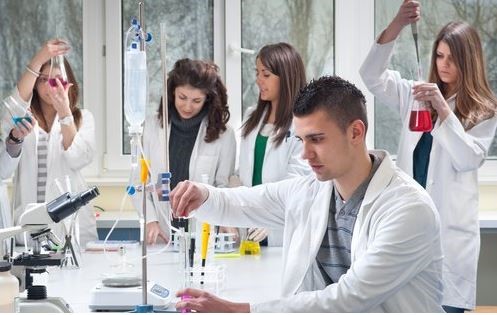WHAT ARE PHTHALATES?

Why Do We Test Phthalates?
If you are a polymer researcher or a chemist at a plastics manufacturer, you are probablyfamiliar with phthalates and phthalate standard testing. But for many other areas of university research and chemistry, you may hear more about these plasticizers in the news rather than the laboratory. Single Use plastics is high on the medias agenda, not only as a headline grabber but as a serious cause for concern as we battle to improve our environment. Here is some helpful information to learn more about how this plastic ingredient works and why some versions are banned in children's toys.
Better know a phthalate
Phthalates or phthalate esters are the esters that come from synthesizing phthalic acid with alcohols. Phthalates are used in a number of plastics as a plasticizer to make them more soft and flexible without losing their durability and strength. Used with polyvinyl chloride and vinyl, phthalates are inexpensive, effective and one of the most widely used plasticizers across the globe. They are colourless and odourless.
Additionally, phthalates are able to withstand very high temperatures.
Phthalates can be divided into two groups, the American Chemistry Council explained. High phthalates, like diisononyl phthalate, diisodecyl phthalate and dipropylheptyl phthalate, have between seven and 13 carbon atoms. These promote durability and are commonly used in the creation of PVC, cable, flooring, walls, fake leather and coated fabrics among other goods.
Low phthalates on the other hand have between three and six carbon atoms in their chemical backbone and are used in medical supplies, ink adhesives and PVC. These include di(2-ethylhexyl) phthalate (DEHP) and dibutyl phthalate (DBP).

Potential Phthalate Danger
Some animal studies have shown that phthalates can damage the liver, kidneys, lungs, and reproductive system, particularly the developing testes. When combined at low levels, some phthalates can act together to cause similar harm as seen with exposure to just one phthalate at high levels. Phthalate exposures in humans has been linked to changes in sex hormone levels, altered development of genitals, and low sperm count and quality.
Although this plasticizer has nearly endless applications for packaging, manufacturing and many other products, some have found it harmful in specific situations. The U.S. Congress banned the use of DEHP, DBP, BBP in children's toys and "certain child care articles" when appearing in a quantity larger than 0.1 percent, according to the U.S. Consumer Product Safety Commission. Child care articles usually refer to items, like a pacifier or teething tool, that comes in contact with children's mouths. Children can be exposed to phthalates by sucking on toys made of plastics that contain phthalates. The International Agency for Research on Cancer (IARC) classifies one type of phthalate, diethylhexyl phthalate (DEHP), as a possible cause of cancer, the International Agency for Research on Cancer (IARC) and National Toxicolgy Programme (NTP) have not classified Diisononyl Phthalate (DINP) as a carcinogen.
The U.S. Centres for Disease Control and Prevention explained that children may be more at risk for the potential dangers that phthalates pose because they put non-food items into their mouths more often. Although phthalates are not used in the production of many children's toys, there are plenty of other products that adults use every day that are made with these chemicals, from rain coats to detergent. However, the CDC explained that there is no reason to believe that moderate use or exposure to phthalates will have any negative effects.
"Human health effects from exposure to low levels of phthalates are unknown. Some types of phthalates have affected the reproductive system of laboratory animals. More research is needed to assess the human health effects of exposure to phthalates," the agency outlined.
In animals, the effects of direct introduction to phthalates have been negative. However, when phthalates have been found in humans, it has been reported that it is quickly passed in the urine. The CDC has stated that phthalates are widespread throughout the U.S.
Whether it is medical tubing or the interior of a car, phthalates are an important part of both daily life and plastics engineering. It is important to know everything you can about this unique plasticizer, which has not been found to conclusively cause damage to adults with average exposure.
CONTACT US
Tel: +44 (0) 151 649 4000
Email: marketing@greyhoundchrom.com
FOLLOW US
YOU MAY ALSO BE INTERESTED IN OUR NEWSLETTER















